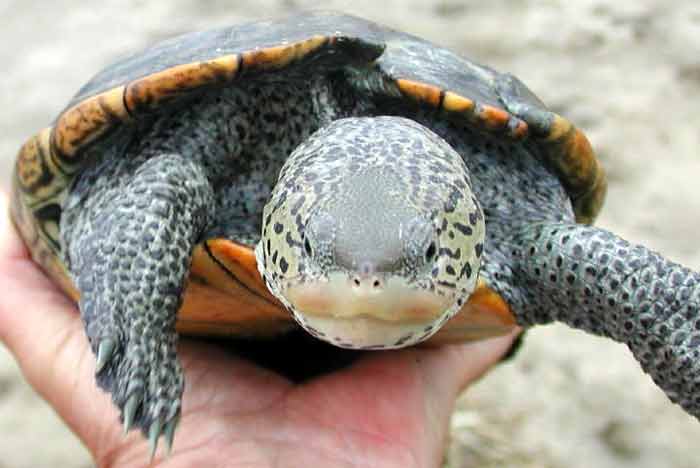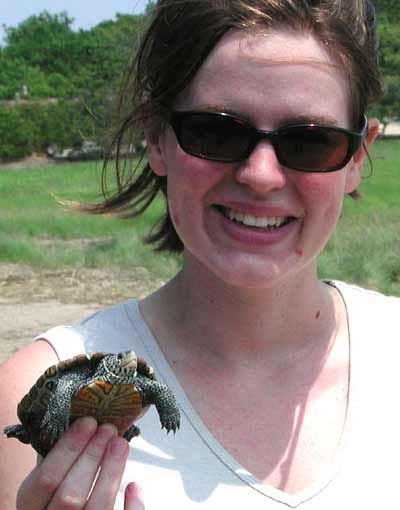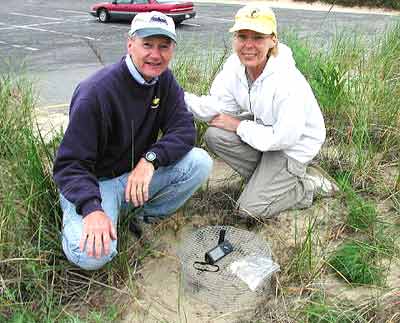
|
In fact, the densest nesting site on the Outer Cape, Lieutenant Island, has witnessed a single nesting run so far this season. No turtles, no tracks, no nests neither viable nor preyed upon.
On the way back my frustration got the better of me. I spotted a male zoned out and basking about two feet from shore. I threw my camera and jacket to Kate and plunged into the frigid water to execute a tricky hand capture of one awfully surprised turtle. Number 1639 is eight years old, measures 10.2 centimeters long and weighs just under 200 grams. This morning the call came at 0630 hours. The sky was heavily overcast with northeast winds blowing off the ocean. Bill and Ann Allan and Hunter, their beloved Golden, had discovered a nest on the marsh side of First Encounter Beach in Eastham. The Allans, some may recall, rescued a cold-stunned Kemp’s ridley from Skaket Beach in Orleans on 21 November 2001 (see Comings and Goings and More Comings). In many respects, today’s weather seemed quite similar to last fall! This lone nest had been partially preyed upon with the top three eggs sucked clean and scattered across the dune. But below the surface, the egg chamber remained intact, and we confirmed more than six viable eggs bunched together in the next layer with likely several more beneath. We restored the nest site and installed a predator excluder. While rescuing a turtle is great, nothing beats the satisfaction of saving a nest. Come late August or early September, the Allans will enjoy the delayed gratification of seeing a batch of live hatchlings scurrying to the marsh, none of whom would have survived without their intervention. Despite the non-cooperating weather, we erected our own signs of spring this afternoon. School groups and scouting dens create hand-made signs, which we post along marsh roadways to alert folks to the annual invasion of nesting diamondback terrapins. Homeowners and visitors alike welcome these original creations as the real hallmark of the beginning of a new season in the Land of Ooze. |
![]()


